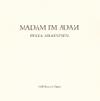 Nurse With Wound's famous Influence List included in the sleeve notes for their debut LP Chance Meeting on a Dissecting Table...has created endless frustration in my life, leading me to spend far toomuch trolling used record sites and online auctions looking to completemy NWW List collection. My goal is to own at least one record from eachof the artists listed, which has frequently seemed an unattainablegoal, the list jam-packed with hopelessly arcane one-offs released intiny editions on small European labels throughout the 60's and 70's.Approaching the task scientifically, I began at the alphabeticalbeginning of the list. No problem there, I was easily able to trackdown Spalax CD reissues of the first few Agitation Free albums; but thesecond artist on the list, Pekka Airaksinen, had me stumped for years.There was nothing I could do but move on to Airway and pretend that Ididn't care about this Finnish avant-garde obscurity. I later found outthat Airaksinen was the main artistic force behind The Sperm — thecreators of the fabulously rare Shh! LP — who also appear lateron the list. As if to answer my insane record-collector prayers,Finland's Love Records have issued this double-disc compilation Madam, I'm Adamto serve as the first widely-available introduction to PekkaAiraksinen's long and fruitful career as one of Finland's most prolificavant-garde electronic artists. Disc one compiles various highlightsstretching from 1968 to 2002 under various guises including The Sperm,Gandhi-Freud and Ajraxin. For disc two, a group of artists from Europeand the UK were invited to contribute reinterpretations of Airaksinen'smusic, the tracklist mirroring that of the first disc. The Sperm'suniquely architectural noise-rock presages industrial music, and attimes - as on the beautifully oppressive "Korvapoliklinikka Hesperia" —shows similarities to future envelope-pushers Dead C and Sunn O))). AsAiraksinen progressed into his 70's period, heavy distortion andimprovised passages of shambling, distorted chaos were soon replaced bya new emphasis on electronic instrumentation and rhythms.Gandhi-Freud's "Molybdene" utilizes synthesizers to create a grainystructure of lopsided arpeggiations. From this point forward,Airaksinen seems to be interested in the myriad possible manifestationsof electronic music, from the odd, I Ching-derived mathematical timesignatures of his early 80's work on the Roland 808, to his currentexploration of techno and ambient musics, all impregnated with hisrabidly uncommercial aesthetic and rigorous application of conceptualstructure. The remixes on the second disc attempt to find contemporaryapplications for Airaksinen's ideas, from the hallucinogenic,post-Timbaland rhythmic interpolations of Nurse With Wound, to theobnoxiously uninteresting digital hardcore of Philipp Quehenberger.Mira Calix contributes a remix of The Sperm that inexplicably buriesthe track under a poorly-executed synthesized orchestral. Along theway, Simon Wickham-Smith and Airaksinen himself turn in mildlyinteresting hijackings of the original works. Most appallingly for arare-music addict, the liner notes directed me towards Pekka's ownwebsite for his Dharmakustannus CD-R label, where for a premium of 20 Euros a pop, you can own everything from his extensive back catalog. Madam I'm Adamdelivers on its stated goals: a reasonably priced introduction to thehistory and continued influence of one of the underground's most uniquebodies of work.
Nurse With Wound's famous Influence List included in the sleeve notes for their debut LP Chance Meeting on a Dissecting Table...has created endless frustration in my life, leading me to spend far toomuch trolling used record sites and online auctions looking to completemy NWW List collection. My goal is to own at least one record from eachof the artists listed, which has frequently seemed an unattainablegoal, the list jam-packed with hopelessly arcane one-offs released intiny editions on small European labels throughout the 60's and 70's.Approaching the task scientifically, I began at the alphabeticalbeginning of the list. No problem there, I was easily able to trackdown Spalax CD reissues of the first few Agitation Free albums; but thesecond artist on the list, Pekka Airaksinen, had me stumped for years.There was nothing I could do but move on to Airway and pretend that Ididn't care about this Finnish avant-garde obscurity. I later found outthat Airaksinen was the main artistic force behind The Sperm — thecreators of the fabulously rare Shh! LP — who also appear lateron the list. As if to answer my insane record-collector prayers,Finland's Love Records have issued this double-disc compilation Madam, I'm Adamto serve as the first widely-available introduction to PekkaAiraksinen's long and fruitful career as one of Finland's most prolificavant-garde electronic artists. Disc one compiles various highlightsstretching from 1968 to 2002 under various guises including The Sperm,Gandhi-Freud and Ajraxin. For disc two, a group of artists from Europeand the UK were invited to contribute reinterpretations of Airaksinen'smusic, the tracklist mirroring that of the first disc. The Sperm'suniquely architectural noise-rock presages industrial music, and attimes - as on the beautifully oppressive "Korvapoliklinikka Hesperia" —shows similarities to future envelope-pushers Dead C and Sunn O))). AsAiraksinen progressed into his 70's period, heavy distortion andimprovised passages of shambling, distorted chaos were soon replaced bya new emphasis on electronic instrumentation and rhythms.Gandhi-Freud's "Molybdene" utilizes synthesizers to create a grainystructure of lopsided arpeggiations. From this point forward,Airaksinen seems to be interested in the myriad possible manifestationsof electronic music, from the odd, I Ching-derived mathematical timesignatures of his early 80's work on the Roland 808, to his currentexploration of techno and ambient musics, all impregnated with hisrabidly uncommercial aesthetic and rigorous application of conceptualstructure. The remixes on the second disc attempt to find contemporaryapplications for Airaksinen's ideas, from the hallucinogenic,post-Timbaland rhythmic interpolations of Nurse With Wound, to theobnoxiously uninteresting digital hardcore of Philipp Quehenberger.Mira Calix contributes a remix of The Sperm that inexplicably buriesthe track under a poorly-executed synthesized orchestral. Along theway, Simon Wickham-Smith and Airaksinen himself turn in mildlyinteresting hijackings of the original works. Most appallingly for arare-music addict, the liner notes directed me towards Pekka's ownwebsite for his Dharmakustannus CD-R label, where for a premium of 20 Euros a pop, you can own everything from his extensive back catalog. Madam I'm Adamdelivers on its stated goals: a reasonably priced introduction to thehistory and continued influence of one of the underground's most uniquebodies of work.samples:


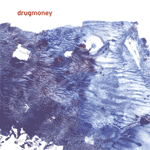 The cover is the first hint that I'm not meant to be comfortablelistening to this record. The second hint comes in the shape of slowlyfulgurating tones coating the room in a fine myst. Brent Gutzeit hascreated a horrifying record by placing motors on the strings of pianosand then manipulating them into tools of the devil (surely that's allthis sound can be). "Piano Motor Skills #2" begins with the slowchugging of some machine, perhaps underground, restlessly performingits task. The bells of far off places resonate over a cloud-coveredcity and somewhere in the alleys lurks a beast ready to feast on somefoolish visitor who has wandered astray. The effect of the long dronesand the carefully mixed rhythms is an atmosphere that sparks andtwitches with tension; the second half of this first track feels like aslow camera pan over this frozen city in my mind, like something out ofa Stanley Kubrick film... only more alien, more remote, and moremonumental. While much of this album is minimalistic, there's anenormity in its soul that breathes through every second. "RidingHorses" creeps along ominously and carefully but feels gigantic as ifit were a sonic photo of some Lovecraftian landscape filled withmonsters unknown to humankind. It slowly fades away into "400 Blows," apiece haunted by warmer and less intimidating tones. As it progresses,the mood becomes increasingly relaxed, as though the horrors of theprevious movements were being massaged out of my shoulders. Gutzeit'saddition of a monastic relief-zone at the end of this record adds adimension to this record that increases its listenability. "400 Blows"would be a great happy ending for Drug Money,but I was faked into believing the ending could ever be happy. Anuntitled and unlisted track closes the album on a very sickly note. Itbegins with bird calls and natural sounds, but ends with a creepingsickness manifested in the sound of overwhelming and powerful bellsroaring in from some place unknown. I'd like to listen to this recordjust after watching a very scary movie. Perhaps with a single candle,the curtains drawn, and a mind for seeing things that may or may not bethere.
The cover is the first hint that I'm not meant to be comfortablelistening to this record. The second hint comes in the shape of slowlyfulgurating tones coating the room in a fine myst. Brent Gutzeit hascreated a horrifying record by placing motors on the strings of pianosand then manipulating them into tools of the devil (surely that's allthis sound can be). "Piano Motor Skills #2" begins with the slowchugging of some machine, perhaps underground, restlessly performingits task. The bells of far off places resonate over a cloud-coveredcity and somewhere in the alleys lurks a beast ready to feast on somefoolish visitor who has wandered astray. The effect of the long dronesand the carefully mixed rhythms is an atmosphere that sparks andtwitches with tension; the second half of this first track feels like aslow camera pan over this frozen city in my mind, like something out ofa Stanley Kubrick film... only more alien, more remote, and moremonumental. While much of this album is minimalistic, there's anenormity in its soul that breathes through every second. "RidingHorses" creeps along ominously and carefully but feels gigantic as ifit were a sonic photo of some Lovecraftian landscape filled withmonsters unknown to humankind. It slowly fades away into "400 Blows," apiece haunted by warmer and less intimidating tones. As it progresses,the mood becomes increasingly relaxed, as though the horrors of theprevious movements were being massaged out of my shoulders. Gutzeit'saddition of a monastic relief-zone at the end of this record adds adimension to this record that increases its listenability. "400 Blows"would be a great happy ending for Drug Money,but I was faked into believing the ending could ever be happy. Anuntitled and unlisted track closes the album on a very sickly note. Itbegins with bird calls and natural sounds, but ends with a creepingsickness manifested in the sound of overwhelming and powerful bellsroaring in from some place unknown. I'd like to listen to this recordjust after watching a very scary movie. Perhaps with a single candle,the curtains drawn, and a mind for seeing things that may or may not bethere. The Italian label continues its valuable new series of archival releases with this 1998 collaboration between two of France's most active contemporary concret-ists and the old-guard explorer to whom they are most indebted. Chion's sprawling tape collages are the obvious precedents for much of Marchetti's and Noetinger's solo work, and his influence is certainly felt on this live performance from the Festival Musique Action, an event that catches the younger musicians still very taken with their elder's drifting compositional technique.
The Italian label continues its valuable new series of archival releases with this 1998 collaboration between two of France's most active contemporary concret-ists and the old-guard explorer to whom they are most indebted. Chion's sprawling tape collages are the obvious precedents for much of Marchetti's and Noetinger's solo work, and his influence is certainly felt on this live performance from the Festival Musique Action, an event that catches the younger musicians still very taken with their elder's drifting compositional technique. Boston's 27 is one of my favorite local groups. It's not simply because their music is a warm welcome against the typical local average rock scene, but Ayal and Maria are two of the nicest people I think I know. Local radio colleague Tracy alerted me to their new release and I had to stop by their show at the Middle East one Friday night to see if it was true or available (well, and to say hi of course). Luckily they had some pre-release limited version that I was able to get fresh out of the box. Unfortunately, I had to be at work at 3:30 the following morning and couldn't stay for their set. Otherwise, I'd film them for The Eye (I plan on doing this eventually).
Boston's 27 is one of my favorite local groups. It's not simply because their music is a warm welcome against the typical local average rock scene, but Ayal and Maria are two of the nicest people I think I know. Local radio colleague Tracy alerted me to their new release and I had to stop by their show at the Middle East one Friday night to see if it was true or available (well, and to say hi of course). Luckily they had some pre-release limited version that I was able to get fresh out of the box. Unfortunately, I had to be at work at 3:30 the following morning and couldn't stay for their set. Otherwise, I'd film them for The Eye (I plan on doing this eventually). "The finest of the fine things"... that's what MF Doom promises youabout six minutes into this album, and you'll be forgiven if the firstthing you think of is asshole partiers at some mansion-warming affair,puking on the rug and having sex in the pool. Instead, though, theSupervillain and Madlib throw open the doors to their very own bistro,sweeping the promise of crappy fried finger-food out into the gutterand offering up a satisfying handful of a sandwich instead. That's afair description of what follows, too: at just a hair over 46 minuteslong, Madvillainyisn't dragged down by the twenty-six guest MCs and nine-piece elephantorchestras that clog up your average MTV-flogged double album. There'san economy to the tracks (which average about two minutes apiece) thatI haven't heard since Naked City or Morgan Fisher's Miniaturescompilations, mainly because there aren't any choruses anywhere in, er,sight. Deprived of the chance for easy repetition, Madlib's muffledpianos and sunny-cafe accordions amble into the mix, do their thing,and depart just as quickly as the verses do. And those verses arepriceless: just like Gift of Gab does with his innumerable verbs, Doomstacks absurdity on top of absurdity until he finally has to take abreath... and then he moves on. With ideas coming and going so quickly,the results should sound haphazard or cluttered, but the individualtracks and elements all flow together without a hitch, forming acoherent comic book universe all their own; for once, theordinarily-also-ran addition of a CD-ROM video complements the musicreally well, too, adding an extra hit of Jack Kirby lunacy and rip-offSea Monkeys ads to an album that just about conjures those images onits own. Surrounded by that kind of silliness, the palpable anger of"Strange Ways" sticks out something fierce: it's a clear-headedbackhand at the warmongers of the world, and it connects that muchharder for the contrast. There's not much else going on in thestorytelling department, but the dominant scissor-swinging-potheadcollage atmosphere suits me just fine. Bring Twinkies.
"The finest of the fine things"... that's what MF Doom promises youabout six minutes into this album, and you'll be forgiven if the firstthing you think of is asshole partiers at some mansion-warming affair,puking on the rug and having sex in the pool. Instead, though, theSupervillain and Madlib throw open the doors to their very own bistro,sweeping the promise of crappy fried finger-food out into the gutterand offering up a satisfying handful of a sandwich instead. That's afair description of what follows, too: at just a hair over 46 minuteslong, Madvillainyisn't dragged down by the twenty-six guest MCs and nine-piece elephantorchestras that clog up your average MTV-flogged double album. There'san economy to the tracks (which average about two minutes apiece) thatI haven't heard since Naked City or Morgan Fisher's Miniaturescompilations, mainly because there aren't any choruses anywhere in, er,sight. Deprived of the chance for easy repetition, Madlib's muffledpianos and sunny-cafe accordions amble into the mix, do their thing,and depart just as quickly as the verses do. And those verses arepriceless: just like Gift of Gab does with his innumerable verbs, Doomstacks absurdity on top of absurdity until he finally has to take abreath... and then he moves on. With ideas coming and going so quickly,the results should sound haphazard or cluttered, but the individualtracks and elements all flow together without a hitch, forming acoherent comic book universe all their own; for once, theordinarily-also-ran addition of a CD-ROM video complements the musicreally well, too, adding an extra hit of Jack Kirby lunacy and rip-offSea Monkeys ads to an album that just about conjures those images onits own. Surrounded by that kind of silliness, the palpable anger of"Strange Ways" sticks out something fierce: it's a clear-headedbackhand at the warmongers of the world, and it connects that muchharder for the contrast. There's not much else going on in thestorytelling department, but the dominant scissor-swinging-potheadcollage atmosphere suits me just fine. Bring Twinkies. Various artist compilations are a hard sell to stores and distributors,however, I don't think I know of any authentic music fan who doesn'tlove them. Thank Youis Temporary Residence's 50th catalogue number (however itchronologically is about the 60-somethingth release) and honors boththe bands and the fans by collecting a small number of great tracksfrom the best that TRL has to offer -AND- uses only fan-contributedartwork solicited from the web site. Like any great compilation, it hasbeen years in the making. (I think I remember hearing word about thisback in 2001.) For Fridge fans who didn't want to spend over $30 for aJapanese import with pesky bonus tracks, the band completes theircollection by donating the 9+ minute "Five Combs," which, along with"Surface Noise," (offered as a free MP3 from their website) makes upthe two tracks left off the non-Japanese versions. The collectioncontinues with various familiar faces and loads of blissfulinstrumental rock tunes like the acoustic fingerpicked "Jignauseum" byKilowatthours, the hypnotic 8+ minute "Bell Jar" by Tarentel, andclosing number (approporiately titled "The Closer") by Sonna. A jaggedrock number from Rumah Sakhit and trippy post-nothing contribution fromKammerflimmer Kollektief, along with the only vocal track (by HalifaxPier), give the collection a little more seasoning. Label superstarsExplosions in the Sky give up a rare track while Xian Hawkins, now 4ADartist, gives perhaps one of his most compelling Sybarite tracks todate, utilizing guitars and electronic processing reminding me howsurprised I am that he doesn't have more snotty European musicpressmongers' heads spinning. For something that's been anticipated solong and a label with as many friends as Jeremy De Vine has, 11 songsseems at first kinda slim, but clearly representative of TemporaryResidence, which has always been about quality, not quantity. It does,however represent more of the past of Temporary Residence and doesn'tserve as a good showcase of some of the newer groups on the roster,like Lazarus, Eluvium, Icarus, The Anomoanon, the faboo Nice Nice,Nightfist, or even Evergreen. With any luck there won't be 49 morereleases until the next compilation.
Various artist compilations are a hard sell to stores and distributors,however, I don't think I know of any authentic music fan who doesn'tlove them. Thank Youis Temporary Residence's 50th catalogue number (however itchronologically is about the 60-somethingth release) and honors boththe bands and the fans by collecting a small number of great tracksfrom the best that TRL has to offer -AND- uses only fan-contributedartwork solicited from the web site. Like any great compilation, it hasbeen years in the making. (I think I remember hearing word about thisback in 2001.) For Fridge fans who didn't want to spend over $30 for aJapanese import with pesky bonus tracks, the band completes theircollection by donating the 9+ minute "Five Combs," which, along with"Surface Noise," (offered as a free MP3 from their website) makes upthe two tracks left off the non-Japanese versions. The collectioncontinues with various familiar faces and loads of blissfulinstrumental rock tunes like the acoustic fingerpicked "Jignauseum" byKilowatthours, the hypnotic 8+ minute "Bell Jar" by Tarentel, andclosing number (approporiately titled "The Closer") by Sonna. A jaggedrock number from Rumah Sakhit and trippy post-nothing contribution fromKammerflimmer Kollektief, along with the only vocal track (by HalifaxPier), give the collection a little more seasoning. Label superstarsExplosions in the Sky give up a rare track while Xian Hawkins, now 4ADartist, gives perhaps one of his most compelling Sybarite tracks todate, utilizing guitars and electronic processing reminding me howsurprised I am that he doesn't have more snotty European musicpressmongers' heads spinning. For something that's been anticipated solong and a label with as many friends as Jeremy De Vine has, 11 songsseems at first kinda slim, but clearly representative of TemporaryResidence, which has always been about quality, not quantity. It does,however represent more of the past of Temporary Residence and doesn'tserve as a good showcase of some of the newer groups on the roster,like Lazarus, Eluvium, Icarus, The Anomoanon, the faboo Nice Nice,Nightfist, or even Evergreen. With any luck there won't be 49 morereleases until the next compilation.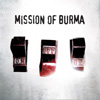 Everything new is old again with a rash of reunions among some of themore seminal bands in underground music, returning to eager audiencesno longer placated by the throngs of modern bands who wear theirinfluences all over their faces and not just on their sleeves. Spurredon by the critical and creative success of Wire's scorching millennialreleases, Boston's Mission of Burma decided they had more to say, inspite of twenty two years of inactivity and vocalist/guitarist RogerMiller's severe tinnitus. Though any attempt at recapturing the sparkof decade's past is a gamble, ONoffON sounds like it could have come just months after Burma's sole LP, 1982's Vs.The original members (with Bob Weston, replacing Martin Swope as theband's tape manipulator) demonstrate that they have not lost any of thestrength, verve, and creativity that define their early releases andthat the off time only deepened the maturity and intelligence that setsthem apart from their contemporaries. The slicing snarl of the guitarsat the opening of "The Setup" is a welcome sound, with the trademarkmetal on metal grinding signaling that Burma is ready to pick up rightwhere they left off. Indicative of this transition from then to now isthe inclusion of three previously unreleased Burma songs that have beenkicking around for twenty years, "Hunt Again," "Dirt," and "Playland."These tracks, until now only available on a compilation of outtakes,appear in much more searing versions, particularly "Playland," whichsqualls with fuzzy dissonance amidst Miller's abusive vocal delivery.Miller offers up some of the most incindeary songs of the album."Wounded World," is a swirling accusation with a tuneful, shoutedchorus that positions the song as an epic rallying cry, a call to armsthat begs raised voices to join in. Rivaling that force is PeterPrescott's "The Enthusiast," a barking, braying track with a relentlessriff, deep and full bodied. "What We Really Want," written by ClintConley in collaboration with poet Holly Anderson (who also lent hertalents to Vs's "Mica"), is a pensive, brooding track thatunderscores Burma's ability to craft an intense rocker that finds itsenergy not just in speed but in meaningful, expressive tension thatunfolds with care. Conley's contributions recall both his early songswith Burma and his more recent outings with his bandConsonant-intricately crafted and concerned with a poetic connectionbetween his words and music. Miller's "Falling" also captures thissensibility, retaining the rough edged sounds of Burma, but augmentingit with subdued acoustic guitar and an emphasis on the cerebral flairsboth musically and lyrically. Burma was never one for typical rockformulas, toying with things like dissonance, tonality, and songstructure to develop songs that were jarringly fresh and enticing. ONoffONis a remarkable record, standing just as tall as the rest of thecatalog and almost surely cementing Mission of Burma as a potent force,not just for their influence on today but for their new endeavors aswell.
Everything new is old again with a rash of reunions among some of themore seminal bands in underground music, returning to eager audiencesno longer placated by the throngs of modern bands who wear theirinfluences all over their faces and not just on their sleeves. Spurredon by the critical and creative success of Wire's scorching millennialreleases, Boston's Mission of Burma decided they had more to say, inspite of twenty two years of inactivity and vocalist/guitarist RogerMiller's severe tinnitus. Though any attempt at recapturing the sparkof decade's past is a gamble, ONoffON sounds like it could have come just months after Burma's sole LP, 1982's Vs.The original members (with Bob Weston, replacing Martin Swope as theband's tape manipulator) demonstrate that they have not lost any of thestrength, verve, and creativity that define their early releases andthat the off time only deepened the maturity and intelligence that setsthem apart from their contemporaries. The slicing snarl of the guitarsat the opening of "The Setup" is a welcome sound, with the trademarkmetal on metal grinding signaling that Burma is ready to pick up rightwhere they left off. Indicative of this transition from then to now isthe inclusion of three previously unreleased Burma songs that have beenkicking around for twenty years, "Hunt Again," "Dirt," and "Playland."These tracks, until now only available on a compilation of outtakes,appear in much more searing versions, particularly "Playland," whichsqualls with fuzzy dissonance amidst Miller's abusive vocal delivery.Miller offers up some of the most incindeary songs of the album."Wounded World," is a swirling accusation with a tuneful, shoutedchorus that positions the song as an epic rallying cry, a call to armsthat begs raised voices to join in. Rivaling that force is PeterPrescott's "The Enthusiast," a barking, braying track with a relentlessriff, deep and full bodied. "What We Really Want," written by ClintConley in collaboration with poet Holly Anderson (who also lent hertalents to Vs's "Mica"), is a pensive, brooding track thatunderscores Burma's ability to craft an intense rocker that finds itsenergy not just in speed but in meaningful, expressive tension thatunfolds with care. Conley's contributions recall both his early songswith Burma and his more recent outings with his bandConsonant-intricately crafted and concerned with a poetic connectionbetween his words and music. Miller's "Falling" also captures thissensibility, retaining the rough edged sounds of Burma, but augmentingit with subdued acoustic guitar and an emphasis on the cerebral flairsboth musically and lyrically. Burma was never one for typical rockformulas, toying with things like dissonance, tonality, and songstructure to develop songs that were jarringly fresh and enticing. ONoffONis a remarkable record, standing just as tall as the rest of thecatalog and almost surely cementing Mission of Burma as a potent force,not just for their influence on today but for their new endeavors aswell. Creating some of the most hauntingly beautiful music seems to comeeasily to the members of the gy!be nuclear family, but on this EP thesparse ensemble creates some of the most honest and unorganized musicof their careers. What started out as Efrim's studio noodling soonbroke out into more collaborative sessions, and eventually the songswere becoming something so special that they deserved and beckoned tobe finished. It's somewhat of a mixed bag in terms of pacing andsubject matter, and the songs come off as a bit of a sampler platter ofthe different bands that these members play in. The more the CDprogresses, however, the more I got the feeling that this music isgetting further and further away from the pure drama and epic dynamicsof the mothership group and more into the territory of smallercharacter pieces. The politics are still present, notably in the firstmoments of the EP where echoing shouts of "More Action! Less Tears!"are heard and on the second track "Microphones in the Trees," aparanoid study of the relentless monitoring of a nation's citizens.Through it all, Efrim is becoming a more capable and stronger vocalist,and the four voice choir adds real gusto to these fairly simple songs.As usual, my pulse quickened any time there was a swell in the song,where the instruments rose in volume or the playing became morefervent, but even during the quieter, subtler moments I was stillentranced. The raw energy of "More Action! Less Tears!" is certainlywelcome, especially considering the quiet nature of most Silver Mt.releases, and even though there is an incredibly sloppy rhythm thatnever maintains a consistent timing, it's still a hair-raising affair.Then the band descends into nigh-Cerberus Shoal territory on theaforementioned "Trees," with odd vocal prowess and gentle piano andguitar. The strangest and most captivating track is the last, whereEfrim goes it alone with toybox and guitar, letting whatever strikeshis fancy escape his lips. The track represents his most assuredlyrical and vocal performance ever, and the beauty of the whole releasewill capture me again and again whenever I listen to it.
Creating some of the most hauntingly beautiful music seems to comeeasily to the members of the gy!be nuclear family, but on this EP thesparse ensemble creates some of the most honest and unorganized musicof their careers. What started out as Efrim's studio noodling soonbroke out into more collaborative sessions, and eventually the songswere becoming something so special that they deserved and beckoned tobe finished. It's somewhat of a mixed bag in terms of pacing andsubject matter, and the songs come off as a bit of a sampler platter ofthe different bands that these members play in. The more the CDprogresses, however, the more I got the feeling that this music isgetting further and further away from the pure drama and epic dynamicsof the mothership group and more into the territory of smallercharacter pieces. The politics are still present, notably in the firstmoments of the EP where echoing shouts of "More Action! Less Tears!"are heard and on the second track "Microphones in the Trees," aparanoid study of the relentless monitoring of a nation's citizens.Through it all, Efrim is becoming a more capable and stronger vocalist,and the four voice choir adds real gusto to these fairly simple songs.As usual, my pulse quickened any time there was a swell in the song,where the instruments rose in volume or the playing became morefervent, but even during the quieter, subtler moments I was stillentranced. The raw energy of "More Action! Less Tears!" is certainlywelcome, especially considering the quiet nature of most Silver Mt.releases, and even though there is an incredibly sloppy rhythm thatnever maintains a consistent timing, it's still a hair-raising affair.Then the band descends into nigh-Cerberus Shoal territory on theaforementioned "Trees," with odd vocal prowess and gentle piano andguitar. The strangest and most captivating track is the last, whereEfrim goes it alone with toybox and guitar, letting whatever strikeshis fancy escape his lips. The track represents his most assuredlyrical and vocal performance ever, and the beauty of the whole releasewill capture me again and again whenever I listen to it.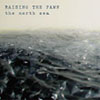 Whenever the weather gets warm, and my seasonal affect disorder slipsback into hibernation, I tend to want to put away my stacks ofaggressive noise discs and cuddle up to something a little morecomfortable, a little more bright. Last year around this time, thechoice was A Northern Chorus' Spirit Flags,a brilliantly pretty record that made up for a lack in dynamicism withsome gorgeous, soaring melodies born out of the shoegazer ethic. So itis not entirely by surprise that friend and labelmates Raising the Fawnare an early contender for a prime spot on the springtime soundtrack.Led by Broken Social Scene contributor John Crossingham, Raising theFawn's The North Sea is another brisk breeze of northern air toflush out the senses. The band has crafted a collection of memorablemelodies and vocalizations that dazzle in a diverse group of songs thatare sometimes comforting and sometimes unsettling. In either case, thesongs are well designed to leave a lasting impression. "Gwendolyn" isan effervescent blast with a looping, springy backbeat. The vocals arelively and vibrant, as Cunningham devastates the wistful, tender lyricswith an expertly employed falsetto. "July 23rd" is the fuzzy, dejectedballad that chronicles an inconceivable loss with such aplomb and anaffecting arrangement that simmers in the brushes as they coast acrossthe cymbals and the snare heads, sounding like the sea spray againstthe rocks. The intricacies of The North Sea elevate the subjectmatter of isolation, loneliness, the remote alienation they illustratewith imagery of derelict ships and drifting captains, so that thedarker tones are polarized and ultimately uplifting. The peakingchoruses of the title track are a perfect example of the lushness ofRaising the Fawn's sound shining through the conceptual mists they havecast around themselves. The richness of the band's sound conjures up aslightly less unhinged version of the full-band Songs:Ohia of Magnolia Electric Co..The final two tracks, which register at just over ten minutes each, areheavy hitting pieces. "Drownded" surges ahead with dense squalls ofguitar that erupt in a collision of chords and expansive post-rockelaboration. The song is a massive presence on an album that built itsfoundation on spacious melodies and singing, a true climax. "E.T.A."finds Raising the Fawn collapsing, emotionally rather thanstylistically, under the drama of their subject, sprawling out in anappropriately stirring last gasp. The North Sea is a perfectrecord for that seasonal transition, clinging to the colder thoughtsbut irrevocably enveloped in the searing yellow light and verdantgreens of spring.
Whenever the weather gets warm, and my seasonal affect disorder slipsback into hibernation, I tend to want to put away my stacks ofaggressive noise discs and cuddle up to something a little morecomfortable, a little more bright. Last year around this time, thechoice was A Northern Chorus' Spirit Flags,a brilliantly pretty record that made up for a lack in dynamicism withsome gorgeous, soaring melodies born out of the shoegazer ethic. So itis not entirely by surprise that friend and labelmates Raising the Fawnare an early contender for a prime spot on the springtime soundtrack.Led by Broken Social Scene contributor John Crossingham, Raising theFawn's The North Sea is another brisk breeze of northern air toflush out the senses. The band has crafted a collection of memorablemelodies and vocalizations that dazzle in a diverse group of songs thatare sometimes comforting and sometimes unsettling. In either case, thesongs are well designed to leave a lasting impression. "Gwendolyn" isan effervescent blast with a looping, springy backbeat. The vocals arelively and vibrant, as Cunningham devastates the wistful, tender lyricswith an expertly employed falsetto. "July 23rd" is the fuzzy, dejectedballad that chronicles an inconceivable loss with such aplomb and anaffecting arrangement that simmers in the brushes as they coast acrossthe cymbals and the snare heads, sounding like the sea spray againstthe rocks. The intricacies of The North Sea elevate the subjectmatter of isolation, loneliness, the remote alienation they illustratewith imagery of derelict ships and drifting captains, so that thedarker tones are polarized and ultimately uplifting. The peakingchoruses of the title track are a perfect example of the lushness ofRaising the Fawn's sound shining through the conceptual mists they havecast around themselves. The richness of the band's sound conjures up aslightly less unhinged version of the full-band Songs:Ohia of Magnolia Electric Co..The final two tracks, which register at just over ten minutes each, areheavy hitting pieces. "Drownded" surges ahead with dense squalls ofguitar that erupt in a collision of chords and expansive post-rockelaboration. The song is a massive presence on an album that built itsfoundation on spacious melodies and singing, a true climax. "E.T.A."finds Raising the Fawn collapsing, emotionally rather thanstylistically, under the drama of their subject, sprawling out in anappropriately stirring last gasp. The North Sea is a perfectrecord for that seasonal transition, clinging to the colder thoughtsbut irrevocably enveloped in the searing yellow light and verdantgreens of spring. The time for the great summer records has arrived, and Meow Meow havecrafted one hell of a good time in their debut, though it may not seemlike it at first. One glance at the album artwork with exploding flowerhead, or at the tracklisting with titles like "The Killing Kind" and"Sick Fixation," may not reveal this; but both belie the music foundinside, even if they correctly reflect the lyrical content. Clearlythis band loves melodies and musical trickery — with burbling andstatic sounds surrounding the opening song on the album — and there's afirm country influence that's even more evident when the pedal steelcomes in. But all those pieces together do not ensure that the bandknows how to wield them and shape them into their bidding. Time andtime again on their debut, Meow Meow had me checking websites anddiscography sites asking "This is their debut?"Kirk Hellie and Christopher O'Brien are deft in their songwritingabilities, and their influences in '90s noise pop and '60s beach rockmay be obvious but they still manage to make some toes tap and somesmiles pour in with an originality all their own. These songs areinfused with sunshine and upbeat rhythms but still have some darkimagery poured all over them. There's laments about fucking it all upto open the record on "Cracked," then talk of killing off the cool kid,then talk of leaving people for dead, and on and on about depressingand deplorable subjects, while still maintaining enough of a party rocksound to forget about it all while listening. The noise continuesthroughout the record, with distorted guitar, static, and fuzz effectsdominating the mix on most every song. This is the most infectiousmusic I've heard this year, though, and despite the lyrics venturingfar into the morbid and disturbing, I was in a good mood from beginningto end.
The time for the great summer records has arrived, and Meow Meow havecrafted one hell of a good time in their debut, though it may not seemlike it at first. One glance at the album artwork with exploding flowerhead, or at the tracklisting with titles like "The Killing Kind" and"Sick Fixation," may not reveal this; but both belie the music foundinside, even if they correctly reflect the lyrical content. Clearlythis band loves melodies and musical trickery — with burbling andstatic sounds surrounding the opening song on the album — and there's afirm country influence that's even more evident when the pedal steelcomes in. But all those pieces together do not ensure that the bandknows how to wield them and shape them into their bidding. Time andtime again on their debut, Meow Meow had me checking websites anddiscography sites asking "This is their debut?"Kirk Hellie and Christopher O'Brien are deft in their songwritingabilities, and their influences in '90s noise pop and '60s beach rockmay be obvious but they still manage to make some toes tap and somesmiles pour in with an originality all their own. These songs areinfused with sunshine and upbeat rhythms but still have some darkimagery poured all over them. There's laments about fucking it all upto open the record on "Cracked," then talk of killing off the cool kid,then talk of leaving people for dead, and on and on about depressingand deplorable subjects, while still maintaining enough of a party rocksound to forget about it all while listening. The noise continuesthroughout the record, with distorted guitar, static, and fuzz effectsdominating the mix on most every song. This is the most infectiousmusic I've heard this year, though, and despite the lyrics venturingfar into the morbid and disturbing, I was in a good mood from beginningto end. Ineffable and at the limits of experience, the sounds inside thisgorgeous little package break experiential limits. Though the imageryin the booklet suggests a cold and drifting place, I imagine the musicto be more akin to viewing the sun from only a few thousand miles away.Rosy Parlane's rich and vibrant pulses eminate and exude away from acenter boiling over with the unspeakable. Divided into three pieces, Iris sounds like the universal Omhissing in through subjective ears, playing with the phenomenology ofexperience, and coming to rest in the form of a vision: perhaps acertain place or a certain time will flash back from memory one listenand, on another, my mind will simply blank and release itself fromtroubles and worries. The bulk of the music isn't all zen-likemeditations on existence, though. "Part 2" hums and modulates away overthe organic sounds of glass, chains, and textured friction washing byin an organized concerto for metal surfaces and brooms. "Part 1" rollsalong slowly, almost like a lullaby, until the processed sound of whitenoise begins raining down over the calm. Raining is a completely aptdescription; Parlane manages to create a digital rainfall out of bitsof white noise that, while going to sleep, had me wanting to get up andcheck if clouds were rolling in. Iris naturally moves into themelodic at times; layers upon layers of sound will suddenly match up inperfect sequence to create moments of strange beauty. The layers driftby eachother eventually and return to the unknown, but these briefforays into familiar territory are welcome when they happen and neverbreak the trance of the drones create. "Part 3" is perhaps the moststunning of the three pieces and the most carefully constructured. Therhythmic popping and snapping mix perfectly with the organ flowspassing above and beneath them. Strangely enough, this last track wasan exotic and ominous soundstrack to a drive into the city - the musiccan be heard a thousand different ways and different people I've playedthis for have described entirely different visuals. The end of therecord runs away like the sound of a projector at the end of the filmroll - it's a movie where everyone sees something different and wherethe images stay unbroken in the mind for days to come.
Ineffable and at the limits of experience, the sounds inside thisgorgeous little package break experiential limits. Though the imageryin the booklet suggests a cold and drifting place, I imagine the musicto be more akin to viewing the sun from only a few thousand miles away.Rosy Parlane's rich and vibrant pulses eminate and exude away from acenter boiling over with the unspeakable. Divided into three pieces, Iris sounds like the universal Omhissing in through subjective ears, playing with the phenomenology ofexperience, and coming to rest in the form of a vision: perhaps acertain place or a certain time will flash back from memory one listenand, on another, my mind will simply blank and release itself fromtroubles and worries. The bulk of the music isn't all zen-likemeditations on existence, though. "Part 2" hums and modulates away overthe organic sounds of glass, chains, and textured friction washing byin an organized concerto for metal surfaces and brooms. "Part 1" rollsalong slowly, almost like a lullaby, until the processed sound of whitenoise begins raining down over the calm. Raining is a completely aptdescription; Parlane manages to create a digital rainfall out of bitsof white noise that, while going to sleep, had me wanting to get up andcheck if clouds were rolling in. Iris naturally moves into themelodic at times; layers upon layers of sound will suddenly match up inperfect sequence to create moments of strange beauty. The layers driftby eachother eventually and return to the unknown, but these briefforays into familiar territory are welcome when they happen and neverbreak the trance of the drones create. "Part 3" is perhaps the moststunning of the three pieces and the most carefully constructured. Therhythmic popping and snapping mix perfectly with the organ flowspassing above and beneath them. Strangely enough, this last track wasan exotic and ominous soundstrack to a drive into the city - the musiccan be heard a thousand different ways and different people I've playedthis for have described entirely different visuals. The end of therecord runs away like the sound of a projector at the end of the filmroll - it's a movie where everyone sees something different and wherethe images stay unbroken in the mind for days to come.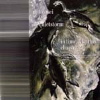 Every once in a while, a DJ set comes off so well that it's actually worth releasing as an album, and the original In Time, Like Thiswas a pretty good trawl through a crate of head-nodding hip-hophistory. Four years on, the DJs responsible for it have released asequel that broadens its sights a bit, and it suffers for the lack offocus. For one thing, the "four turntables, two mixers, and nothingelse" credo of the original is gone: the Doctor Who sound effects thatcovered up quick transitions in the original have been replaced withdubby echoes and digital delays, and that unfortunately open up thedoor for sometimes-house-DJ Kensei to dump the tired sounds of hisother job into the mix. It would be hypocritical to knock the duo forblending genres on a music-geek site, and the racks of any DJ shop willtell you that plenty of clubs are only too happy to get some peanutbutter in their chocolate, but the lame-dance-club stink of house istoo strong a reminder of hip-hop's more embarrassing "shake your assand damn The Message" tendencies to ignore altogether. When they startplaying records even a bit outside of the usual club fodder, though,the results improve: Deep Purple getting rear-ended by a conga beat anda rocky drum kit while some zippy high-pitched scratching goes on isworth hearing, and it only gets better when some Yello/Art of Noise-ishloops and shards of Missy Elliott worm their way into the proceedings.Unfortunately, the good stuff only goes on for a couple of minutes at atime, and it's almost always dragged to a halt by invitations to waveyour beer in the air; the fact that In Time 2 is acompetently-mastered room recording, or perhaps badly-masteredsoundboard output mixed with one, even lets you hear the audience doingjust that. I'm not sure what the rationale for the crowd noise is, butit really only reminds you that you're not at the Liquid Room and/ordrunk enough to really get caught up in the moment and just enjoythings. For 2000 yen, it's a lot cheaper than going to the show wouldhave been, but that really just softens the edge of the disappointment.
Every once in a while, a DJ set comes off so well that it's actually worth releasing as an album, and the original In Time, Like Thiswas a pretty good trawl through a crate of head-nodding hip-hophistory. Four years on, the DJs responsible for it have released asequel that broadens its sights a bit, and it suffers for the lack offocus. For one thing, the "four turntables, two mixers, and nothingelse" credo of the original is gone: the Doctor Who sound effects thatcovered up quick transitions in the original have been replaced withdubby echoes and digital delays, and that unfortunately open up thedoor for sometimes-house-DJ Kensei to dump the tired sounds of hisother job into the mix. It would be hypocritical to knock the duo forblending genres on a music-geek site, and the racks of any DJ shop willtell you that plenty of clubs are only too happy to get some peanutbutter in their chocolate, but the lame-dance-club stink of house istoo strong a reminder of hip-hop's more embarrassing "shake your assand damn The Message" tendencies to ignore altogether. When they startplaying records even a bit outside of the usual club fodder, though,the results improve: Deep Purple getting rear-ended by a conga beat anda rocky drum kit while some zippy high-pitched scratching goes on isworth hearing, and it only gets better when some Yello/Art of Noise-ishloops and shards of Missy Elliott worm their way into the proceedings.Unfortunately, the good stuff only goes on for a couple of minutes at atime, and it's almost always dragged to a halt by invitations to waveyour beer in the air; the fact that In Time 2 is acompetently-mastered room recording, or perhaps badly-masteredsoundboard output mixed with one, even lets you hear the audience doingjust that. I'm not sure what the rationale for the crowd noise is, butit really only reminds you that you're not at the Liquid Room and/ordrunk enough to really get caught up in the moment and just enjoythings. For 2000 yen, it's a lot cheaper than going to the show wouldhave been, but that really just softens the edge of the disappointment.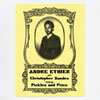 Don't let it turn your brown eyes blue, and don't let them turn yourblues beige. Andre Ethier takes a break from his day job with theDeadly Snakes to take a stab at a record whose components could befound strewn across dozens of other releases. This is no cut-and-pastepastiche work of interpolations, but rather a slab of traditional(read: tired) old blues motions compiled into original works. Ethierindulges in an brusque exploration of the blue-eyed blues (though Iadmit not knowing what color his eyes are, really), strumming anacoustic guitar along the same world-weary twelve bars that musicianshave been walking for decades, with or without the benefits of a bassline. It's difficult to hear the performer through his influences, withthe arraignments paying a slavish tribute to the core of most songsreleased before 1970 and Ethier's Dylanesque phrasing leaving verylittle room for interpretation. "Little Saddy" is a notable offender,with the regrettable formula of repeating the first line of the versetwice before reaching a new thought. A standard blues move if thereever was one, though such moves only work when that line isparticularly sharp, or delivered with some kind of intense conviction.Unfortunately, when the Dylan recedes, the listener is left with onlyEthier, sounding completely hollow and flat. On "The Hanging Man,"Ethier asks his band mates for a big finish just before the final bars,and the response is an abrupt thud that makes for a curiously anemicclose. Without a doubt, there are elements of this record that willappeal to some. There are the lingering glimmers of Ethier's influencesthat haunt every song, and the purist trappings of the fully acousticsetup and live to tape recording process. The former, however amusingthe familiar sounds might be, does not make for a compelling record,only a catalog of weak versions of other people's hooks, meticulouslystraightened out and made dull. That it was recorded live to tape ispart badge and part excuse, providing a raw and unfettered version ofEthier and company's performance together—a claim that the neat andtidy recording does not back up. The ensemble is extremely reserved,daring not to wander out of the linear structures of their songs. Idon't mean to say that they should have devolved their trad-blues intosome kind of psychedelic freak out, but that their homage is far toopristine and clinical to ever capitalize on the crackling,devil-may-care lineage they seek to identify their music with.
Don't let it turn your brown eyes blue, and don't let them turn yourblues beige. Andre Ethier takes a break from his day job with theDeadly Snakes to take a stab at a record whose components could befound strewn across dozens of other releases. This is no cut-and-pastepastiche work of interpolations, but rather a slab of traditional(read: tired) old blues motions compiled into original works. Ethierindulges in an brusque exploration of the blue-eyed blues (though Iadmit not knowing what color his eyes are, really), strumming anacoustic guitar along the same world-weary twelve bars that musicianshave been walking for decades, with or without the benefits of a bassline. It's difficult to hear the performer through his influences, withthe arraignments paying a slavish tribute to the core of most songsreleased before 1970 and Ethier's Dylanesque phrasing leaving verylittle room for interpretation. "Little Saddy" is a notable offender,with the regrettable formula of repeating the first line of the versetwice before reaching a new thought. A standard blues move if thereever was one, though such moves only work when that line isparticularly sharp, or delivered with some kind of intense conviction.Unfortunately, when the Dylan recedes, the listener is left with onlyEthier, sounding completely hollow and flat. On "The Hanging Man,"Ethier asks his band mates for a big finish just before the final bars,and the response is an abrupt thud that makes for a curiously anemicclose. Without a doubt, there are elements of this record that willappeal to some. There are the lingering glimmers of Ethier's influencesthat haunt every song, and the purist trappings of the fully acousticsetup and live to tape recording process. The former, however amusingthe familiar sounds might be, does not make for a compelling record,only a catalog of weak versions of other people's hooks, meticulouslystraightened out and made dull. That it was recorded live to tape ispart badge and part excuse, providing a raw and unfettered version ofEthier and company's performance together—a claim that the neat andtidy recording does not back up. The ensemble is extremely reserved,daring not to wander out of the linear structures of their songs. Idon't mean to say that they should have devolved their trad-blues intosome kind of psychedelic freak out, but that their homage is far toopristine and clinical to ever capitalize on the crackling,devil-may-care lineage they seek to identify their music with.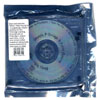 This dismal new offering by Genesis P-Orridge was made in collaborationwith a well-known producer, who prefers to go under the assumed name ofAstrid Monroe for this release, presumably out of sheer embarrassmentat the outcome. I'm certain that I'm not alone in having beenunderwhelmed by most of Genesis' recent musical work, most especially1999's Thee Majesty, P-Orridge's vanity "spoken word" album of apoetic,repetitive blather that featured the painfully dull ambient soundsettings of the talentless Bryin Dall. "When I was young, there weretwo reasons for me to look in a mirror," Genesis intoned on TheeMajesty's debut Time's Up,"The first reason was to see if my parting was straight. The secondreason was to see if my tie was straight. Now I'm older, and there's athird reason." Apparently, this sort of thing passes for profundityover at the P-Orridge household, and perhaps among a small legion ofTOPY holdovers, but for those who are not altogether convinced thatGenesis is a transsexual alien prophet-shaman-guru whose everyutterance must be the very voice of God, it can't help but seem alittle trite. It should come as no surprise my abject disappointmentwhen I discovered that When I Was Young is nothing but a rehash of the same non-revelatory prattle that populated Time's Up.Filtering out the minimal, dark-ambient backing tracks from theoriginal material, Astrid Monroe reuses Genesis' vocal tracks, addingheavy distortion and vocoder effects, placing them in new settings oflaughably swanky, nocturnal trip-hop outmoded by at least a decade.It's hard to say who exactly the real Astrid Monroe might be, butjudging from the dubby, overproduced atmospherics and syrupy strings,I'd place him or her squarely in the Massive Attack camp. Sci-fitheremin and ring-modulation effects are used to contribute to adruggy, night-clubby atmosphere, which sounds frankly ludicrousaccompanying P-Orridge's space-cadet proselytizing. It should be notedthat Genesis P-Orridge is a great artist and a massively importantcounter-cultural figure who has been at the vanguard of art, music andculture for thirty years. Even now, with his transgender surgicalmutations and his recent resurrection and transmutation of PTV andThrobbing Gristle, he is proving that he is still a vital and relevantfigure. Many complained when Psychic TV began experimenting with acidhouse back in their mid-80's Infinite Beat phase, but inGenesis' defense, it hadn't yet become a hopeless clich?, and PTV wereable to innovate and expand the definitions of the genre, influencing ageneration of producers. Unfortunately, When I Was Young comes more than 12 years too late to be even slightly relevant.
This dismal new offering by Genesis P-Orridge was made in collaborationwith a well-known producer, who prefers to go under the assumed name ofAstrid Monroe for this release, presumably out of sheer embarrassmentat the outcome. I'm certain that I'm not alone in having beenunderwhelmed by most of Genesis' recent musical work, most especially1999's Thee Majesty, P-Orridge's vanity "spoken word" album of apoetic,repetitive blather that featured the painfully dull ambient soundsettings of the talentless Bryin Dall. "When I was young, there weretwo reasons for me to look in a mirror," Genesis intoned on TheeMajesty's debut Time's Up,"The first reason was to see if my parting was straight. The secondreason was to see if my tie was straight. Now I'm older, and there's athird reason." Apparently, this sort of thing passes for profundityover at the P-Orridge household, and perhaps among a small legion ofTOPY holdovers, but for those who are not altogether convinced thatGenesis is a transsexual alien prophet-shaman-guru whose everyutterance must be the very voice of God, it can't help but seem alittle trite. It should come as no surprise my abject disappointmentwhen I discovered that When I Was Young is nothing but a rehash of the same non-revelatory prattle that populated Time's Up.Filtering out the minimal, dark-ambient backing tracks from theoriginal material, Astrid Monroe reuses Genesis' vocal tracks, addingheavy distortion and vocoder effects, placing them in new settings oflaughably swanky, nocturnal trip-hop outmoded by at least a decade.It's hard to say who exactly the real Astrid Monroe might be, butjudging from the dubby, overproduced atmospherics and syrupy strings,I'd place him or her squarely in the Massive Attack camp. Sci-fitheremin and ring-modulation effects are used to contribute to adruggy, night-clubby atmosphere, which sounds frankly ludicrousaccompanying P-Orridge's space-cadet proselytizing. It should be notedthat Genesis P-Orridge is a great artist and a massively importantcounter-cultural figure who has been at the vanguard of art, music andculture for thirty years. Even now, with his transgender surgicalmutations and his recent resurrection and transmutation of PTV andThrobbing Gristle, he is proving that he is still a vital and relevantfigure. Many complained when Psychic TV began experimenting with acidhouse back in their mid-80's Infinite Beat phase, but inGenesis' defense, it hadn't yet become a hopeless clich?, and PTV wereable to innovate and expand the definitions of the genre, influencing ageneration of producers. Unfortunately, When I Was Young comes more than 12 years too late to be even slightly relevant.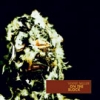 After a long wait with no signs of life of any kind, Vinny Miller isset to confound the world on his debut full-length for 4AD. Signed overfive years ago and with only one song released on a 4AD compilation,Miller is the label's longest signing without a record to speak of, andOn the Blockshows exactly why. Listening to the record, I got the overwhelmingsense of someone who is looking for the sound that defines him, movingin all directions at once, and wrestling with the whole process and thevoices in his head all at the same time. There are moments when, nodoubt in my mind, he's figured it out and he's created a song thatmoves and completely crushes the soul at the same time. There are alsomoments when he's lost the plot completely, and yet I think it'simportant to him that people hear those moments more than the others sothat he can grow as an artist. Either way, it is a genuinely confusingalbum with sketches of brilliance from time to time that hint at a muchgreater work that will obliterate us all. The album opens with arecording of Vinny calling into a radio program quiz show where notsaying yes or no is the key, and the DJ's reaction to speaking withhim. Then, seamlessly, the first true song begins in "Breaking Out ofYour Arms," and it's a stunner. Just Vinny and a guitar rend absoluteheartbreak from even the staunchest joy, and he even reaches a bit toprovide some histrionics that do not disappoint. His voice is a veryfragile one on most songs, due mostly, I think, to attempts to soar outof his range, but it suits the material perfectly. The pace continueson the mellow side, but then on "Pigpen," Vinny unleashes the darkside. It doesn't seem like it at first, but in the middle of the trackhe shifts immediately from pan effects and minimal percussion to allout burn. It's delicious, and even though it seems a bit schizophrenic,my whole body shook with the force in the speakers. The more bizarremoments ruin such a brilliant progression, however, with the vocalblends and grunts of "Cromagno," destroying the momentum just beforethe calm returns. And so it goes on, with highs then lows continuing towar for control with neither fully winning. The awkward starts andstops intermingled with the annoying side tracks that go nowhere blindthe wonder of it all, and thus I'm left with the feeling that this is afine debut, too long in the making due to the artist's confusion. I'mmore than inclined to give Vinny time, though, because the best momentsof this album eclipse entire catalogues of other bands.
After a long wait with no signs of life of any kind, Vinny Miller isset to confound the world on his debut full-length for 4AD. Signed overfive years ago and with only one song released on a 4AD compilation,Miller is the label's longest signing without a record to speak of, andOn the Blockshows exactly why. Listening to the record, I got the overwhelmingsense of someone who is looking for the sound that defines him, movingin all directions at once, and wrestling with the whole process and thevoices in his head all at the same time. There are moments when, nodoubt in my mind, he's figured it out and he's created a song thatmoves and completely crushes the soul at the same time. There are alsomoments when he's lost the plot completely, and yet I think it'simportant to him that people hear those moments more than the others sothat he can grow as an artist. Either way, it is a genuinely confusingalbum with sketches of brilliance from time to time that hint at a muchgreater work that will obliterate us all. The album opens with arecording of Vinny calling into a radio program quiz show where notsaying yes or no is the key, and the DJ's reaction to speaking withhim. Then, seamlessly, the first true song begins in "Breaking Out ofYour Arms," and it's a stunner. Just Vinny and a guitar rend absoluteheartbreak from even the staunchest joy, and he even reaches a bit toprovide some histrionics that do not disappoint. His voice is a veryfragile one on most songs, due mostly, I think, to attempts to soar outof his range, but it suits the material perfectly. The pace continueson the mellow side, but then on "Pigpen," Vinny unleashes the darkside. It doesn't seem like it at first, but in the middle of the trackhe shifts immediately from pan effects and minimal percussion to allout burn. It's delicious, and even though it seems a bit schizophrenic,my whole body shook with the force in the speakers. The more bizarremoments ruin such a brilliant progression, however, with the vocalblends and grunts of "Cromagno," destroying the momentum just beforethe calm returns. And so it goes on, with highs then lows continuing towar for control with neither fully winning. The awkward starts andstops intermingled with the annoying side tracks that go nowhere blindthe wonder of it all, and thus I'm left with the feeling that this is afine debut, too long in the making due to the artist's confusion. I'mmore than inclined to give Vinny time, though, because the best momentsof this album eclipse entire catalogues of other bands.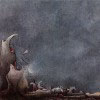 Eluvium's Matthew Cooper has eschewed the use of electronic and digitalmanipulation for his second album on Temporary Residence, preferringinstead to sit down a piano, turn the microphone on, and record thepure output of his fingers on the ebonies and ivories. What I came toenjoy most about last year's Lambent Material(a beautifully narcotic album) was the stark monotony of the tones.There was very little variation in a given song: piano restructured byway of electronics and effects. Each measure was laid out economicallyand in the perfect amount to satisfy the movement of the piece. Here,however, Eluvium produces an undiluted and more robust sound, full ofvirtuosic piano suites without any tampering on the end production. Thepace is slightly faster, the playing more frenetic (sounds simply slideinto each another), and the output is altogether a differentexperience. The sound is palpably lonely, as if you are peeking inunnoticed on a master at work alone is his studio, a painter engaged inthe first brush-strokes on a canvas. Likewise, Eluvium grants us accessto the very inner workings of his musical creations, isolating thesub-atomic particles of them. These particles are kinetic and lush andelegant in their spareness. The pensiveness is evident in every songregardless of length, be it only one-minute long ("An AccidentalMemory") or seven-minutes ("The Well-Meaning Professor"). Ironically, asong like "Nepenthe" is more lambent than anything on Lambent Material:notes flicker and collide, gliding up and down in arpeggios andcascades. It is not a long album; 27 minutes and suddenly the end hits.I feel as though I've been truly listening in on a daily practicesession (half an hour of piano playing squeezed in between a biologylab report and the Proust reading). Throughout my listenings of thisalbum, I could swear that I heard a telephone ringing, not in thebackground of the music, but somewhere in my apartment. I don't knowwhat aural resonance or vibrational frequency was causing thisphenomenon, and so it makes me think that someone, somewhere is tryingto get through to me. But I don't care. The music is still playing andI am a little transfixed by what I hear.
Eluvium's Matthew Cooper has eschewed the use of electronic and digitalmanipulation for his second album on Temporary Residence, preferringinstead to sit down a piano, turn the microphone on, and record thepure output of his fingers on the ebonies and ivories. What I came toenjoy most about last year's Lambent Material(a beautifully narcotic album) was the stark monotony of the tones.There was very little variation in a given song: piano restructured byway of electronics and effects. Each measure was laid out economicallyand in the perfect amount to satisfy the movement of the piece. Here,however, Eluvium produces an undiluted and more robust sound, full ofvirtuosic piano suites without any tampering on the end production. Thepace is slightly faster, the playing more frenetic (sounds simply slideinto each another), and the output is altogether a differentexperience. The sound is palpably lonely, as if you are peeking inunnoticed on a master at work alone is his studio, a painter engaged inthe first brush-strokes on a canvas. Likewise, Eluvium grants us accessto the very inner workings of his musical creations, isolating thesub-atomic particles of them. These particles are kinetic and lush andelegant in their spareness. The pensiveness is evident in every songregardless of length, be it only one-minute long ("An AccidentalMemory") or seven-minutes ("The Well-Meaning Professor"). Ironically, asong like "Nepenthe" is more lambent than anything on Lambent Material:notes flicker and collide, gliding up and down in arpeggios andcascades. It is not a long album; 27 minutes and suddenly the end hits.I feel as though I've been truly listening in on a daily practicesession (half an hour of piano playing squeezed in between a biologylab report and the Proust reading). Throughout my listenings of thisalbum, I could swear that I heard a telephone ringing, not in thebackground of the music, but somewhere in my apartment. I don't knowwhat aural resonance or vibrational frequency was causing thisphenomenon, and so it makes me think that someone, somewhere is tryingto get through to me. But I don't care. The music is still playing andI am a little transfixed by what I hear.  Chancing upon Basil Kirchin's previously unissued album Quantum: A Journey Through Sound in Two Partsreleased on Trunk last year was like stumbling onto a briefcase full oflarge, unmarked currency. The densely structured combinations oftime-stretched field recordings, jazz improvisations and tenseatmospherics had that dreamlike, dark, subconscious quality that I hadpreviously attributed only to 1980's underground cassette heroes likeRoger Doyle and HNAS. Technically, Kirchin's works could be describedas musique concrete, but his unorthodox, hallucinogenic collages ofsquawking geese, autistic children and backwards-tracked saxophonesolos seem well beyond the spectrum of academia to me. The Quantum release was one of my favorites of 2003, and it led me to seek out Basil Kirchin's amazing soundtrack to The Abominable Dr. Phibes and his pair of early-70's experimental masterpieces, both entitled Worlds Within Worlds. With Charcoal Sketches/States of Mind, Trunk continues their schedule of unearthing never-issued works by Kirchin. The Charcoal Sketchesof the title are three brief instrumental improvisations, overlaid withthe now-familiar recordings of birdsong, slowed and mutated to resemblethe bellowing hoots of a wounded gryphon. This material was recordedduring the nascent period before the Worlds sessions, and itdoesn't share the same furious and unpredictable fieriness of the otheralbums. The musicians appear to be playing off of the mutatedbirdcalls, cautiously weaving through a sparse work of gentle radiance.At times, the smooth funkiness of the guitar and bass, mixed with theotherworldliness of the fluttering whoops and chatters, reminded me ofthe soundtrack to Fantastic Planet grafted onto In a Silent Way-era Miles. States of Mindis considerably more disturbing, a collection of nine briefinstrumental sketches each meant to illustrate a different mentaldisorder. This music was used in the soundtrack for a short film shownonly once at an international conference of Psychiatrists held in 1968.The title of "Plaques and Tangles" refers to the brain degenerationcaused by Alzheimer's Disease. The track begins in a chaotic swell ofcompeting neuron fires, and eventually digresses into a dark fog ofconfusion. Frantic evocations of mania and paranoia are supplied byEvan Parker's frenzied saxophone solos. My only complaint is that themost of these tracks are far too brief and fragmentary, with not enoughtime given to fully develop the tantalizing themes. Consequently, it'snot nearly as immersive and powerful as Kirchin's other works. AlthoughI realize that this is inherent in the original sources from whichthese brief sketches are drawn, I hope that Kirchin chooses to revisitthis material at some future point and weave it into the kind ofmasterpiece I know he is capable of.
Chancing upon Basil Kirchin's previously unissued album Quantum: A Journey Through Sound in Two Partsreleased on Trunk last year was like stumbling onto a briefcase full oflarge, unmarked currency. The densely structured combinations oftime-stretched field recordings, jazz improvisations and tenseatmospherics had that dreamlike, dark, subconscious quality that I hadpreviously attributed only to 1980's underground cassette heroes likeRoger Doyle and HNAS. Technically, Kirchin's works could be describedas musique concrete, but his unorthodox, hallucinogenic collages ofsquawking geese, autistic children and backwards-tracked saxophonesolos seem well beyond the spectrum of academia to me. The Quantum release was one of my favorites of 2003, and it led me to seek out Basil Kirchin's amazing soundtrack to The Abominable Dr. Phibes and his pair of early-70's experimental masterpieces, both entitled Worlds Within Worlds. With Charcoal Sketches/States of Mind, Trunk continues their schedule of unearthing never-issued works by Kirchin. The Charcoal Sketchesof the title are three brief instrumental improvisations, overlaid withthe now-familiar recordings of birdsong, slowed and mutated to resemblethe bellowing hoots of a wounded gryphon. This material was recordedduring the nascent period before the Worlds sessions, and itdoesn't share the same furious and unpredictable fieriness of the otheralbums. The musicians appear to be playing off of the mutatedbirdcalls, cautiously weaving through a sparse work of gentle radiance.At times, the smooth funkiness of the guitar and bass, mixed with theotherworldliness of the fluttering whoops and chatters, reminded me ofthe soundtrack to Fantastic Planet grafted onto In a Silent Way-era Miles. States of Mindis considerably more disturbing, a collection of nine briefinstrumental sketches each meant to illustrate a different mentaldisorder. This music was used in the soundtrack for a short film shownonly once at an international conference of Psychiatrists held in 1968.The title of "Plaques and Tangles" refers to the brain degenerationcaused by Alzheimer's Disease. The track begins in a chaotic swell ofcompeting neuron fires, and eventually digresses into a dark fog ofconfusion. Frantic evocations of mania and paranoia are supplied byEvan Parker's frenzied saxophone solos. My only complaint is that themost of these tracks are far too brief and fragmentary, with not enoughtime given to fully develop the tantalizing themes. Consequently, it'snot nearly as immersive and powerful as Kirchin's other works. AlthoughI realize that this is inherent in the original sources from whichthese brief sketches are drawn, I hope that Kirchin chooses to revisitthis material at some future point and weave it into the kind ofmasterpiece I know he is capable of. 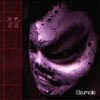 The music of David Y. Wang, who has releases on Bpitchcontrol,Tigerbeat6, and Violent Turd, suffers from a case of nostaglicschizophrenia with a touch of sentimental aural influenza, and as aresult some technique-obsessed modern day electronic music listenerswill undoubtedly have trouble with Uzumaki. Well fuck them.Fragmented sounds and fractured samples litter this short album likebeer bottles on a public beach in a way that reminds me of the good ol'days circa I Care Because You Do and Tango N Vectif.Whether intentional or not (as many patients are often unaware of theirillnesses), Mochipet has created a charming little retro IDM disc, withoccasional fits of childlike grumpiness mixed with carefreeplayfulness. "Labha" starts off almost innocuously like a symphonyorchestra tuning their instruments over a bed of subtle digital errors.Unable to restrain itself, it ultimately erupts into a hardcore technodrum assault, truly setting the tone for the rest of this dizzyingrelease. "Adosa" almost sounds like a tender love song or lullaby for aspecial someone with its clean guitar plucking, even with itsskittering sliced snares and cymbals. Of all the tracks on Uzumaki,"Alobha" stands out with a quirky melodies battling with one anotherover spastic beats that would make most breakcore producers blush likeschoolgirls. On the remix front, Schematic's poster boy Otto VonSchirach provides a typically unbalanced, uneven remix of the track"Polka Electronic Death Coutry," where hysterical samples,pitch-shifted soul hooks, and speed metal riffs and groans do battlefor control, ultimately leaving no clear winner and not offering much.Component artist Xyn, however, brings the album to a close with a farmore coherent reworking of "Doboro," offering up something akin to anupbeat version of Boards Of Canada, if you can imagine that.Considering how many IDM acts these days spend more time harping on theprocess than the melody (*cough* Autechre *cough* *cough* RichardDevine), I imagine many jaded electronic music listeners will get awell-deserved simple pleasure from the enjoyable sounds of Uzumaki.
The music of David Y. Wang, who has releases on Bpitchcontrol,Tigerbeat6, and Violent Turd, suffers from a case of nostaglicschizophrenia with a touch of sentimental aural influenza, and as aresult some technique-obsessed modern day electronic music listenerswill undoubtedly have trouble with Uzumaki. Well fuck them.Fragmented sounds and fractured samples litter this short album likebeer bottles on a public beach in a way that reminds me of the good ol'days circa I Care Because You Do and Tango N Vectif.Whether intentional or not (as many patients are often unaware of theirillnesses), Mochipet has created a charming little retro IDM disc, withoccasional fits of childlike grumpiness mixed with carefreeplayfulness. "Labha" starts off almost innocuously like a symphonyorchestra tuning their instruments over a bed of subtle digital errors.Unable to restrain itself, it ultimately erupts into a hardcore technodrum assault, truly setting the tone for the rest of this dizzyingrelease. "Adosa" almost sounds like a tender love song or lullaby for aspecial someone with its clean guitar plucking, even with itsskittering sliced snares and cymbals. Of all the tracks on Uzumaki,"Alobha" stands out with a quirky melodies battling with one anotherover spastic beats that would make most breakcore producers blush likeschoolgirls. On the remix front, Schematic's poster boy Otto VonSchirach provides a typically unbalanced, uneven remix of the track"Polka Electronic Death Coutry," where hysterical samples,pitch-shifted soul hooks, and speed metal riffs and groans do battlefor control, ultimately leaving no clear winner and not offering much.Component artist Xyn, however, brings the album to a close with a farmore coherent reworking of "Doboro," offering up something akin to anupbeat version of Boards Of Canada, if you can imagine that.Considering how many IDM acts these days spend more time harping on theprocess than the melody (*cough* Autechre *cough* *cough* RichardDevine), I imagine many jaded electronic music listeners will get awell-deserved simple pleasure from the enjoyable sounds of Uzumaki.
